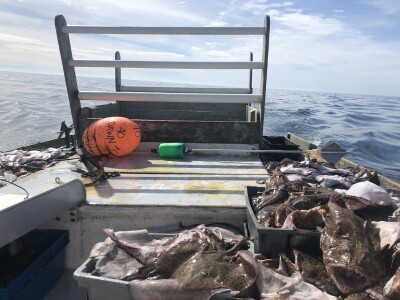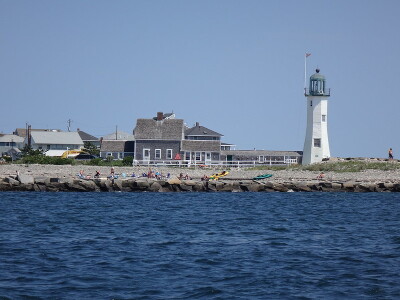Alaska & Pacific Salmon
Prices down, Alaska pinks pack cans; West Coast fleet anticipates May start
Forecasts indicate Alaska harvesters will have more salmon to land in the coming season, but a flood of farmed salmon could determine how many fish are sold fresh or wind up in freezers or cans. Returns to the West Coast, meanwhile, appear to be rising.
The Alaska Department of Fish and Game's total 2013 projected harvest for all species of Alaska salmon stands at 178.9 million fish, 117.8 million of which will be pinks. In fact, if pinks come in stronger than predicted the fleet could best 2012's total harvest of 127.1 million fish for all five species.
More of that fish wound up in cans last year than in 2011, says Andy Wink, seafood analyst with the McDowell Group, in Juneau.
Wink notes that 18 percent of Alaska's total salmon pack wound up cooked and sealed in steel instead of fresh packs or in freezers in 2011; last year, 28 percent went into cans. According to Alaska Department of Revenue data, processors canned 34 percent of Alaska's pinks while 65 percent were frozen or shipped to fresh outlets in 2011. In 2012, 52 percent went into cans.
Plummeting wholesale prices in fresh or frozen farmed fish likely caused the sharp shift in product forms. Greater global supplies of farmed salmon are providing stiff competition for fresh and frozen wild salmon, Wink says.
"Given what the prices are for canned salmon and what they are for farmed, that makes total sense," says Wink. Farmed fish prices, he adds, have fallen approximately 40 percent since mid 2011.
Greater production is among the reasons farmed salmon prices have crashed. McDowell Group data indicates an 11.5 percent increase in production from 2010 to 2011 and a 14.6 percent increase from 2011 to 2012.
Yet, other Alaska Seafood Marketing Institute Seafood Market Information Service data show ex-vessel prices for Alaska fish remain relatively stable despite increased world supplies of wild and farmed salmon.
In 2011, wild supplies totaled 2.2 billion pounds, farmed supplies stood at 4.4 billion pounds and ex-vessel prices for all five species of Alaska's wild salmon averaged 82 cents per pound. Last year farmed salmon increased to 5 billion pounds, wild supplies fell to around 1.6 billion pounds, yet Alaska ex-vessel prices only fell to 80 cents per pound, pre-post season adjustments. However, that 2012 price is slightly inflated, Wink says, because fewer low-priced pinks were harvested than in 2011.
According to Alaska Commercial Fisheries Entry Commission data, in 2011 738.26 million pounds of salmon was landed with fishermen notching estimated gross earnings of $611.87 million. The commission's preliminary 2012 data shows landings fell to 611.27 million pounds, a 21 percent drop, and estimated gross earnings were $483.80 million.
As the West Coast salmon season neared its first opener on May 1, there was optimism that landings might be on par with or exceed those of the last couple of years, says Zeke Grader, executive director of the Pacific Coast Federation of Fishermen's Associations.
"It's looking fairly encouraging on the troll side," Grader says. "The outlook on the Klamath is good again." However, the Klamath's projected fall returns of 727,700 kings is down from last year's 1.6 million fish, according to the Pacific Fishery Management Council's 2013 preseason report, released in February.
Sacramento returns have increased sharply since an abysmal estimate of 54,600 fish in 2008. Last year's run projection was 819,400, and biologists predict a return of 834,200 fish for 2013. The number of jacks returning to spawn during the preceding year drives the population estimates.
As for last year's harvest and ex-vessel prices, Pacific Fisheries Information Network data shows the fleet in all three states landed 9.3 million pounds of kings worth nearly $31.8 million, with an average ex-vessel price of $3.65 per pound. That's up from 2011 when the fleet landed almost 8.6 million pounds valued at $24.4 million, with a price of $2.99 per pound. — Charlie Ess
Gulf/South Atlantic Yellowfin
Early indications are that 2013 could be a very good year for yellowfin tuna harvesters. Price has been rising for several years on the Atlantic Coast and in the Gulf of Mexico.
In North Carolina and Florida, which account for approximately 40 percent of the yellowfin tuna harvest in the eastern United States, price has increased every year since 2009. Harvests, too, have been increasing for at least three years, so the strength of the ex-vessel price isn't based on scarcity.
Steve George, general manager at Willie R. Etheridge Seafood Co., in Wanchese, N.C., on Roanoke Sound, says price is very good now. And he expected it to remain so when longliners really began to harvest significant amounts of yellowfin in early spring.
"Yellowfin is extremely strong right now; early April should be very strong, especially for 50 pounds and up," he says.
He also expects domestic yellowfin to continue to hold its ground against imports. "I haven't heard much about imports coming in," George says.
In Beaufort, N.C., Tony Frost, president of Homer Smith Seafood, says he has begun to land a bit of yellowfin.
"We're getting a couple of longline boats," with yellowfin bringing "$3 to $5, depending on grade," he says.
Preliminary N.C. Division of Marine Fisheries numbers show a strong 2012 harvest of 880,377 pounds at an estimated $1.88 per pound on average versus a 2011 harvest of 526,238 pounds and a 2010 harvest of 368,027 pounds. Price also increased in each of these years.
The big challenge for longline vessels at Wanchese and other fish houses on the sound side of the upper Outer Banks is the critical situation at Oregon Inlet. Severe shoaling makes the inlet frequently impassable to all but the smallest vessels.
Fortunately for this fishery, some smaller longliners, in the 40-foot range, mostly run by local fishermen who know the inlet well, can get through when others cannot, George says.
Tilman Gray, a 2008 NF Highliner who owns two seafood houses says the weather was a problem this winter. One of his businesses is on the sound side of Avon, north of Cape Hatteras, and the other is in the village of Hatteras, where vessels do have reasonable ocean access.
"The tuna didn't make it down to us," he says. "It's been slow since the first week in December. The weather has been so bad."
Harvest numbers from Florida, where fishermen catch yellowfin on both coasts, likewise show a steadily improving yellowfin market.
The price improvement over the last few years on Atlantic and Gulf coasts likely reflects the improving national economy and higher demand for the 50-pound and larger sashimi-grade fish. Etheridge Seafood's George says the sashimi-grade fish will be in high demand as the season cranks up.
Fishermen landed 983,279 pounds of yellowfin in Florida in 2012, according to preliminary numbers from Florida's Fish and Wildlife Research Institute. Landings rose from 726,724 pounds in 2011 and 431,150 pounds in 2010. Price increased each of these years, lifting the 2012 average price of $3.83 a pound ex-vessel to an all-time high.
A slight but measurable weakening in import volume over the past three years may also be contributing to this market improvement for the domestic fishery. Yellowfin imports of all preparations dropped to 39.4 million pounds in 2012 from 39.7 million pounds in 2011 and 39.8 million pounds in 2010, according to NMFS import statistics.
The domestic yellowfin fishery appears to be gaining — or at least holding — market share against the imports. In the age of globalized markets, that's a rare but very welcome development.
Rising year-over-year ex-vessel prices may also be leading more vessel owners to go to the increased effort and expense necessary to outfit pelagic longliners, despite fuel prices creeping back toward $4 per gallon. — Hoyt Childers






